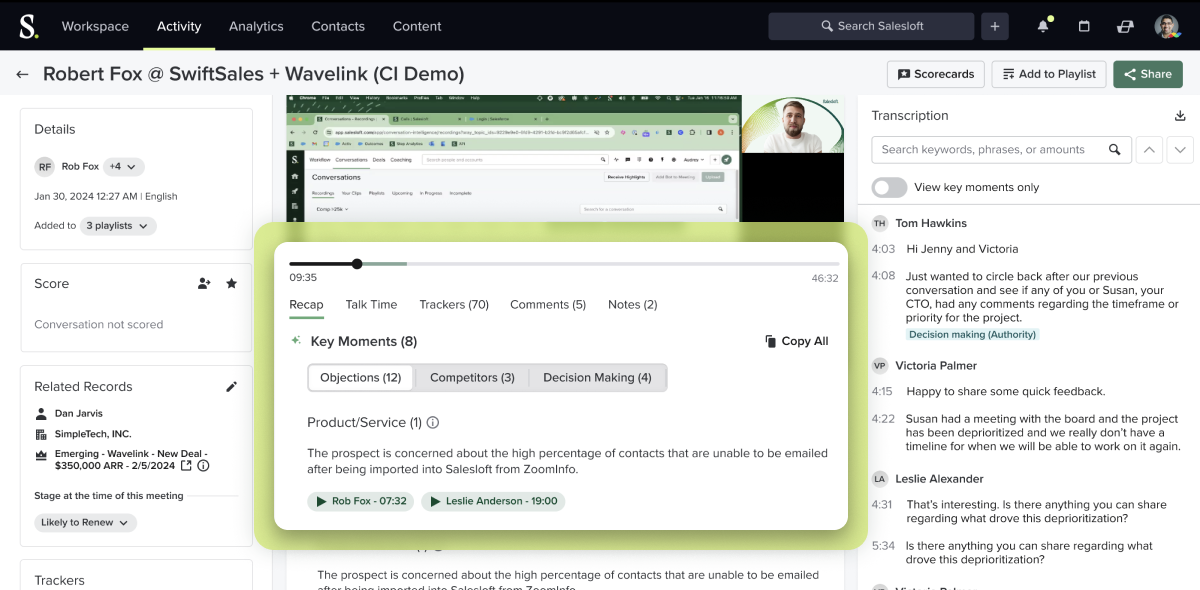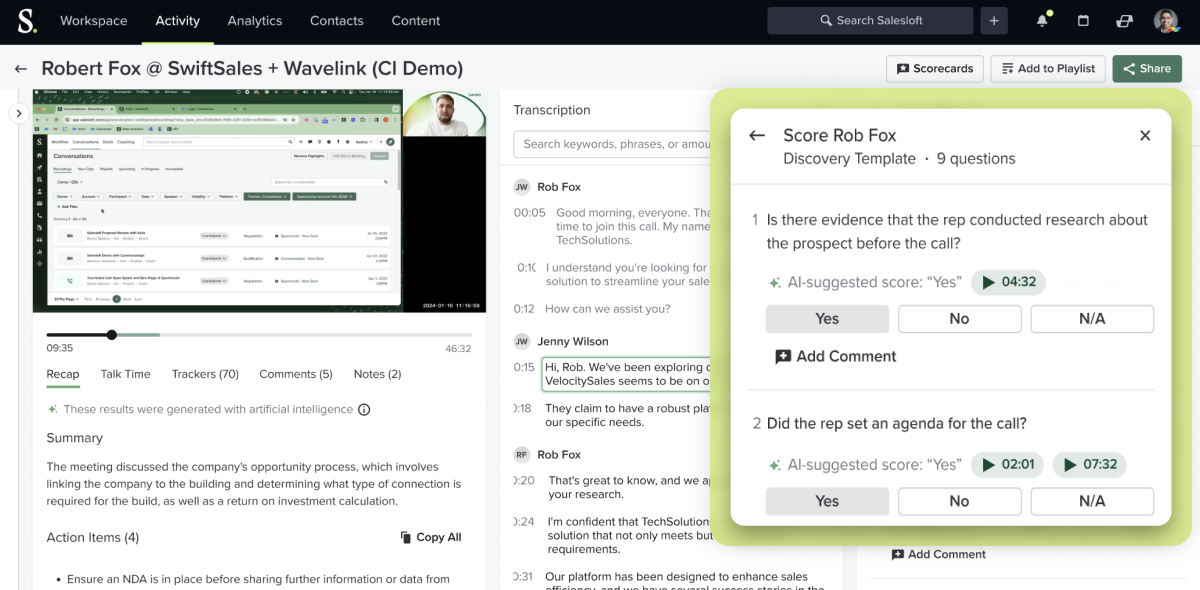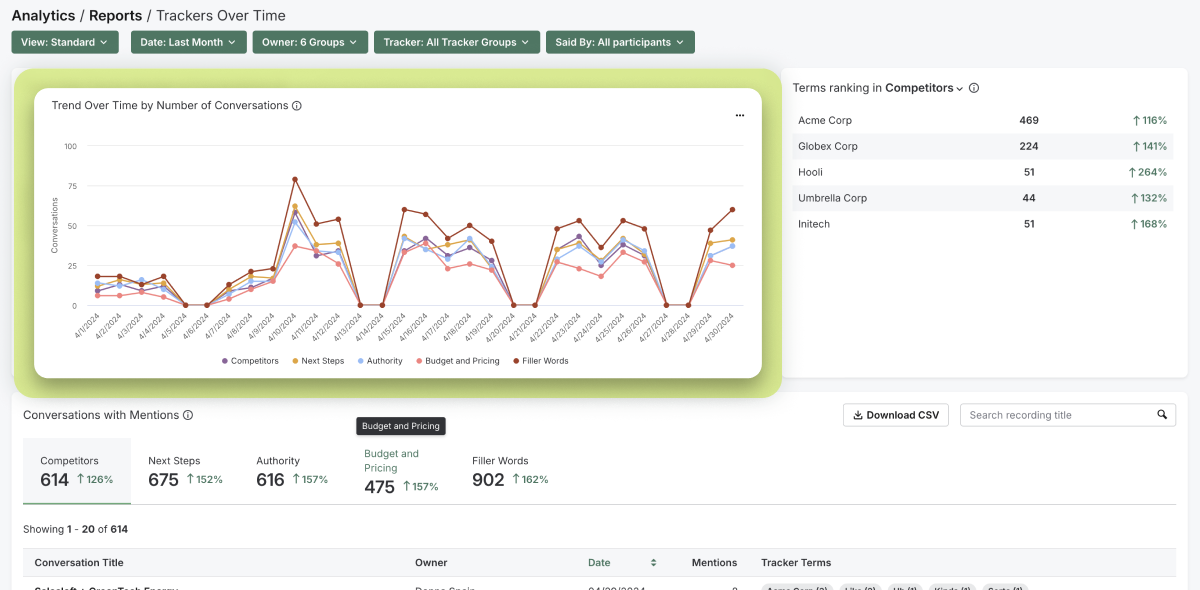4 Proven Ways to Use Conversations Data to Bring on Better Buying and Selling Experiences
Published:

Buyers and sellers are constantly engaging across a variety of channels. From web to phone and email to chat (think Drift!), each interaction is a critical point in time to capture valuable insights that sellers can act on to move a deal forward. So how do you make every conversation count?
By making sure you’ve got an AI-assisted Conversation Intelligence (CI) tool in every aspect of your workflow.
With a cutting-edge CI solution, you’ll be able to capture and analyze all buyer/seller conversations so you can deliver more relevant buying experiences and turn prospects into customers.
Here we break down four different ways to take advantage of (and take action on!) all of your sales conversations – making it easier to walk in your buyers’ shoes and provide value with every interaction.
1. Take advantage of Conversation data to understand the most critical topics that key decision-makers are bringing up
Your customer conversations are a goldmine of opportunity. But listening to every single call is painfully ineffective and labor-intensive, and doesn’t give you the need-to-know stuff fast.
To identify blockers before they become deal risks, it’s mission-critical for revenue teams to dissect the most important information from their calls. Conversation Key Moments makes this possible by using Generative AI to review conversations.
Surfacing the most critical topics buyers are bringing up across competitors, objections, and decision-makers lets teams closely examine deals much more quickly.
- For sales managers:
- Save time sifting through hundreds of recordings across your sales team
- Start coaching to opportunities that directly impact deal health and velocity
- For sellers:
- Identify decision-makers, and understand what they care about
- Prep and run effective meetings that move deals forward
- Build your confidence as you take more calls

2. Use notable Conversations data to prep yourself (and everyone else) for every meeting
Revenue teams either spend a lot of time prepping for calls…. or little to no time at all. Either way, the process is ineffective and leaves room for meetings to be unproductive, unsuccessful, or worse, missed completely.
A Meeting Prep Workflow simplifies the process and makes sure you’re equipped with the information your buyer cares most about. It consolidates relevant conversations data, key moments, and deal summaries into a single “cheat sheet.” This makes it easy to take action directly in your workflow with a meeting brief so you can spend less time “digging” and more time selling.
It also makes it easy to share meeting notes with your selling team and send an agenda with action items to every attendee on the call so everyone knows what to expect. With everything you need to prepare and execute meetings directly from your workflow, you can better align with your team and engage with the entire buying committee.

3. Address selling strengths and opportunities identified on calls – and then get better
Is it better to coach someone based on their outcomes (quota), rather than how they work (their conversations)? The short answer: no.
To coach to specific challenges and tie activities to outcomes, sellers need targeted feedback that actually addresses strengths and opportunities identified on their calls. Conversation Scorecards makes this possible by giving managers out-of-the-box scorecard templates for outbound and discovery calls, directly in their workflow.
Even better? Conversation Scorecards feature AI-suggested answers that tie directly to the parts of the transcript that justify the answer. Quickly answer questions like, “Did the seller leave the conversation with a next step clearly defined?” and use the AI-assisted answers to flesh out proven sales playbooks based on real-world examples.
And since coaching is a two-way street, sellers can also request scorecards, which creates an action item for their manager in their manager’s workflow. That way they can ask for support when they need it, highlight their wins, and get more game tape on how to tackle every conversation.

4. Look beyond point-in-time data to identify trends and see the big picture
Conversation data is super helpful if it gives you the full picture of what’s actually going on.
When it comes to your conversations, understanding trends and patterns over time helps you answer the “big picture” questions. For example, if a competitor is mentioned in a single recording, what does it mean for the market? If a customer expresses dissatisfaction twice this week, do you have a customer service problem? Or, if one of your reps fails to communicate the value proposition consistently, should you tweak your training?
Tracker Trends make connections across your conversations to save you from the impossible task of stitching insights from individual conversations. Whether you’re a manager looking to see how your team is performing, an enablement professional curious about what content is working, or a product manager trying to capture real-time feedback on specific features, Tracker Trends reduce the time spent on diagnosing problems you and your team may be facing.

The best source of data is your customer’s voice. And we can help you use it. Salesloft Conversations transcribes, analyzes, and summarizes it right in front of you. For more information on how you can tap into conversation insights, request a chat with our team.
Recommended for you:


























